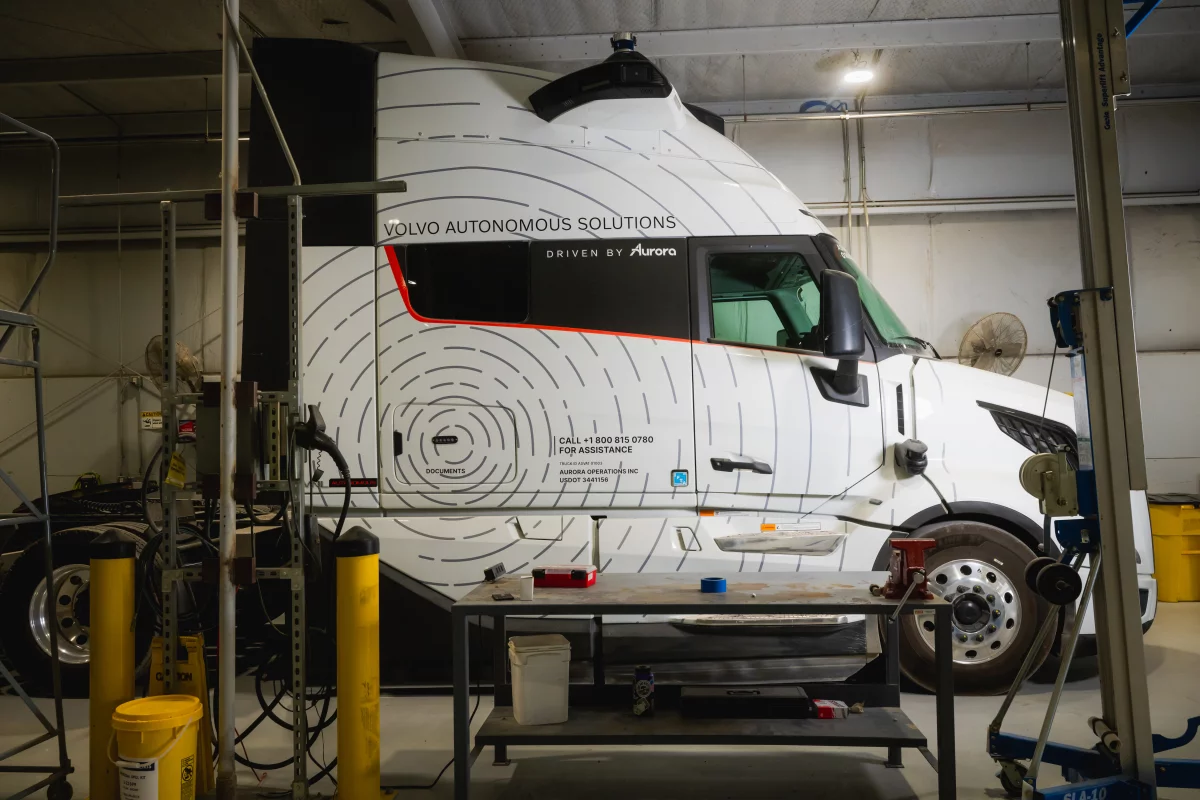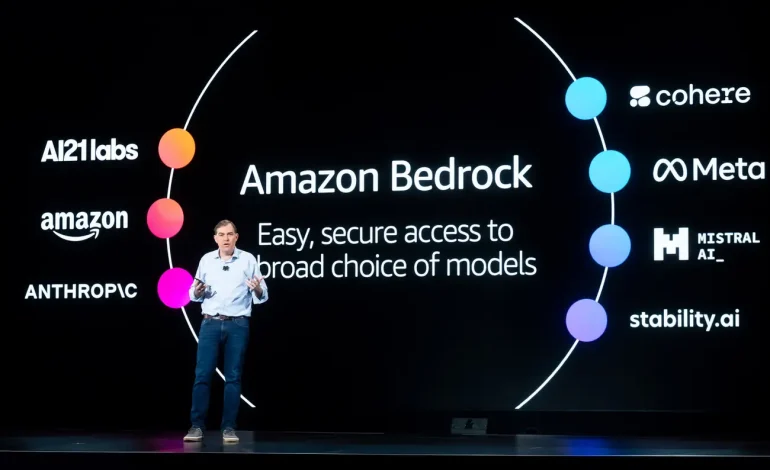The original story by for Business Insider.
Amazon Web Services spent the last year talking up Bedrock, its flagship generative AI platform. But behind the scenes this summer, AWS was running into a very un-Amazon problem: it simply didn’t have enough capacity to keep some of its biggest AI customers happy.
An internal AWS document from July described Bedrock as facing “critical capacity constraints” that were “threatening customer adoption” and causing “substantial revenue loss” across multiple industries. In plain English: demand was there, but AWS couldn’t serve it — and rivals like Google Cloud were waiting with open arms.
Bedrock is supposed to be the centerpiece of AWS’s AI push, giving customers access to models like Anthropic’s Claude and Meta’s Llama through Amazon’s cloud. But this summer, some high-profile clients found the platform didn’t have the horsepower they needed.
- Epic Games moved a $10 million Fortnite AI project to Google Cloud after AWS couldn’t provide enough Bedrock quota, according to the internal doc.
- Oil trader Vitol considered shifting work away from AWS, putting about $3.5 million in revenue at risk because of “prolonged quota approvals.”
- Other customers — including Atlassian and GovTech Singapore — were stuck waiting on quota increases, delaying at least $52.6 million in projected sales.
Quota, in this context, is like the oxygen of AI cloud services: it limits how many tokens (chunks of text/data) a customer can process per minute or how many API calls they can make. If you’re building AI-heavy apps and your provider can’t raise that ceiling fast enough, your only real option is to go elsewhere.
That’s exactly what some customers did.
AWS executives know this is a problem. The July document flatly warned that Bedrock’s constraints were pushing customers to competitors like Google Cloud, OpenAI, and Anthropic’s own platform.
Amazon’s public line is that the growing pains are a side effect of success.
A company spokesperson said Bedrock is experiencing “rapid growth,” and AWS is adding capacity as fast as possible. Reviewing tough customer feedback, they added, is central to Amazon’s culture.
“At Amazon, we’re vocally self-critical because that’s how we drive continuous improvement and deliver better results for customers,” the spokesperson said. “We’re grateful for all customer feedback — including challenges they encounter — because it helps us make Bedrock even better.”
Internally, though, three current and former employees said the capacity crunch stayed near the top of AWS’s worry list at least through September.
On Amazon’s October earnings call, CEO Andy Jassy made it clear that scaling infrastructure — especially for AI — is now priority one.
He said AWS has added more than 3.8 gigawatts of power in the past year, more than any other cloud provider, and has doubled its power capacity since 2022. The plan is to double it again by 2027. That’s essentially a promise to keep pouring money into data centers, networking, and custom chips at an extraordinary pace.
Jassy also argued that Bedrock has the potential to grow as big as EC2, the classic AWS compute service that helped turn Amazon’s cloud unit into a profit machine. Most Bedrock workloads today run on Amazon’s in-house Trainium AI chips, he said — but so far, those chips are mainly being used by “a small number of very large customers.” The hope is that more mid-sized firms will jump on board once next-gen Trainium rolls out.
In other words: Bedrock’s shortages may be partly self-inflicted, as AWS leans into a few mega-clients while smaller and mid-tier customers wait in line.
Even when AWS could provide enough capacity, some customers complained that Bedrock simply didn’t perform as well as the alternatives.
The internal July doc described a wave of customers using Claude via Bedrock who chose to move their workloads to Anthropic’s own platform or Google Cloud instead. The reasons:
- ongoing capacity constraints;
- higher latency (slower responses);
- and missing features compared with rival platforms.
Companies like Figma, Intercom, and Wealthsimple were among those shifting workloads “due to one or several of these challenges,” the document said.
The UK’s Government Digital Service even considered moving to Microsoft’s cloud because Anthropic’s Claude 3.7 Sonnet model was running noticeably slower on Bedrock than elsewhere.
Meanwhile, Thomson Reuters chose Google Cloud over Bedrock for part of its CoCounsel AI product after finding Bedrock to be 15% to 30% slower and missing key government compliance certifications. Executives raised these issues directly with AWS leaders, prompting monthly review meetings to track progress.
Thomson Reuters CTO Joel Hron later said the company moved “one component” of an AI workload to Google Cloud to prioritize speed but still runs large chunks on AWS and Anthropic as part of a multi-cloud strategy.
The document painted a stark picture of “increasing competition” from Google’s Gemini models. According to AWS’s own internal analysis:
- Gemini offered 5–6x larger quotas than Claude on Bedrock.
- Google’s Gemini Pro outperformed Claude-via-Bedrock “across multiple benchmarks.”
- Gemini Flash, a smaller, cheaper model, delivered “comparable quality at a fraction of the cost.”
And this was before Google rolled out its next big Gemini upgrade, which has further improved performance.
Startups noticed.
- Fintech firm TainAI shifted 40% of its Claude workloads from Bedrock to Gemini Flash, saving roughly $85,000 a day, the document said.
- Hotel Planner was also planning to migrate to Google Cloud or OpenAI for cost and performance reasons.
Beyond Google, the doc warned that AWS was falling behind in AI inference — the “run the model” side of the market where Bedrock competes — while players like Databricks, FireworksAI, and Nvidia’s Dynamo were sprinting ahead with more focused strategies.
“We are still missing an inspiring long-term vision and a holistic strategy,” the internal report concluded — a rare, blunt critique at a company that prides itself on leadership principles and long-term thinking.
For investors, this all cuts both ways.
On the one hand, AWS’s capacity problems are a clear sign that demand for AI services is still sky-high. Customers want to run more models, process more data, and ship more AI-powered features than ever.
On the other hand, keeping up means eye-watering capital spending. Amazon has said it plans to spend about $125 billion on capex this year, with even more coming in 2026 — much of it aimed at AI infrastructure. AWS revenue climbed to $33 billion last quarter, up 20% year over year, the fastest growth since 2022, but markets have grown jumpy about whether the entire industry is overspending on AI.
Missed deals, slower models, and nervous customers only intensify those fears.
AWS insists it’s closing the gap with more chips, more power and more careful listening to customers. But the episode shows how fragile first-mover advantage can be in the AI cloud race: if you can’t give developers the speed, capacity and features they want, they can now jump to Google — or OpenAI, or Anthropic, or any number of hungry competitors — with just a few changed lines of code.
For Amazon, Bedrock is supposed to be the foundation of its AI future. This summer’s capacity crunch was a reminder that even foundations can crack — and in this market, rivals don’t wait around while you patch them.










The latest news in your social feeds
Subscribe to our social media platforms to stay tuned